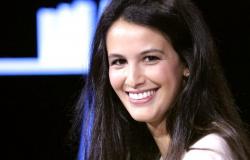When the French learned of the brutal death of General Leclerc on November 28, 1947 in an air crash, the entire country was stunned. The man who liberated Paris three years earlier, the hero of the second DB, has only just turned 45. Broke in the prime of life, the shock is immense, especially since this disappearance occurs in a very particular context. In the midst of the Cold War, France clashed and divided between the Gaullists, the socialists and the communists. It was then that Leclerc’s death reactivated memories of a nation united in the fight against the Nazis, a country which had been able to come together despite its complexity and its differences.
Beyond death, a figure who brings together
Philippe Collin first wonders what Leclerc represented in the minds of the French in the immediate post-war period. His funeral took place in an extremely tense domestic political situation, marked by insurrectional strikes in November 1947. A moment of great parliamentary tension during which Leclerc’s death sounded like a national truce. In the name of the old war camaraderie, the confrontation between communists, socialists and Gaullists is suspended. He becomes a sort of absolute hero, who embodies the rebirth of France and undoubtedly marks one of the last moments of national unanimity, if not the end of an era.
Death of a hero, birth of a providential figure
Even if with the exclusion of sub-Saharan soldiers from the second DB, his Gaullist intransigence, his Homeric anger, his attachment to the colonial empire of his time, and the fact that in certain places he polarizes a memory of confrontations, Leclerc is far from blameless. His premature death will have fixed him in the status of an indisputable national hero, as he embodies a certain number of the values of a France which was dejected, but which was only asking to be reborn.
What should we see behind the national emotion of General Leclerc’s funeral? What symbol? What was Leclerc’s image within French society in the post-war years? What can we say about the role of De Gaulle in the life of General Leclerc? What does such a figure represent for the historian?
Team
Story and production: Philippe Collin
Director: Juliette Médevieille
Readings: Anne Kessler and Laurent Stoker, members of the Comédie Française
Report: Martine Abat
Editorial assistance: Irène Ménahem, assisted by Léonie Ferrer
Sound documentation: Frédéric Martin
Mixing: Basile Beaucaire and Cédric Diallo
Sound design: Basile Beaucaire
Martine Abat’s report in L’Haÿ-les-Roses, in the Val de Marne, alongside Serge Finot99 years old, one of the last survivors of the volunteers of the second DB, who escorted Leclerc to the eagle’s nest.
Speakers
Christophe Charleshistorian, professor emeritus of contemporary history at Panthéon-Sorbonne University
Eric T. Jennings, professor of contemporary history at the University of Toronto. Specialist in French colonial history, author of “Free France was African” (Perrin)
Géraud Létang, historian, researcher at the Defense Historical Service, Scientific Coordinator of the Mission for the 80th anniversary of the Liberation. Specialist in colonial empires and the Second World War, author of a thesis entitled “Mirages of a Rebellion. Being a Free Frenchman in Chad (1940-1943)” under the direction of Guillaume Piketty
Jean-Christophe Notinwriter, biographer of Leclerc, author of “Leclerc” (Perrin)
Guillaume Pikettyhistorian, specialist in the Resistance and the Second World War, Professor of contemporary history at Sciences Po, and permanent researcher attached to the Sciences Po History Center, author with Jean-François Murraciole of “The encyclopedia of the Second World War” (Robert Laffont, 2015)
Christine Levisse-Touzéhistorian, doctor of letters, honorary general curator of the heritage of the City of Paris, associated research director at Sorbonne-Université, former director of the Museum of General Leclerc and the Liberation of Paris – Musée Jean Moulin, biographer of Leclerc, author with Julien Toureille of “Leclerc, patriot and rebel” (West France), of “Ecrits de combats” (Sorbonne Universités presse) and of “Philippe Leclerc de Hauteclocque: The legend of a hero, 1902-1947” (Tallandier, 2002 )
References
Archives
- Funeral of General Leclerc, RDF reports, in Algiers, December 1947, at the Arc de Triomphe, December 1947, at Notre-Dame de Paris, rue de Rivoli, and at the Invalides, December 1947
- De Gaulle retires from political life, Les Actualités françaises, January 1946
- Presentation of the Marshal’s baton to General Leclerc posthumously, RDF, November 1952
- The star fair at the Tuileries, Les Actualités françaises, June 1949
- Leclerc dedicates to the veterans of the 2nd DB the film retracing the epic of the division, ECPAD, 1947, “Leclerc, from Chad to Berchtesgaden”
- Landing in Normandy of the 2nd DB, ECPAD, 1947, “Leclerc, from Chad to Berchtesgaden”
- Speech by André Malraux on the occasion of Jean Moulin’s entry into the Pantheon, RDF, July 1958
- General Leclerc reviews the troops, RDF, September 1944
- Report from the Eagle’s Nest with the 2nd DB, RD, May 1945
- Presentation of decorations to the 2nd DB on the Alsace front, RDF, September 1944
Restoration of the INA archives of the funeral of General Leclerc: Jonathan Fitoussi and Christophe Jolibois
Book extracts
- Leclerc’s epic in the Sahara 1940-1943, General Ingold (1945, editions, Berger-Levrault), preface by General de Gaulle
Film clips
- “At God’s Pleasure” by Robert Mazoyer
- “De Gaulle, the brilliance and the secret” by François Velle
- “Snow and Fire” by Claude Pinoteau
- “Jean Moulin” by Yves Boisset






